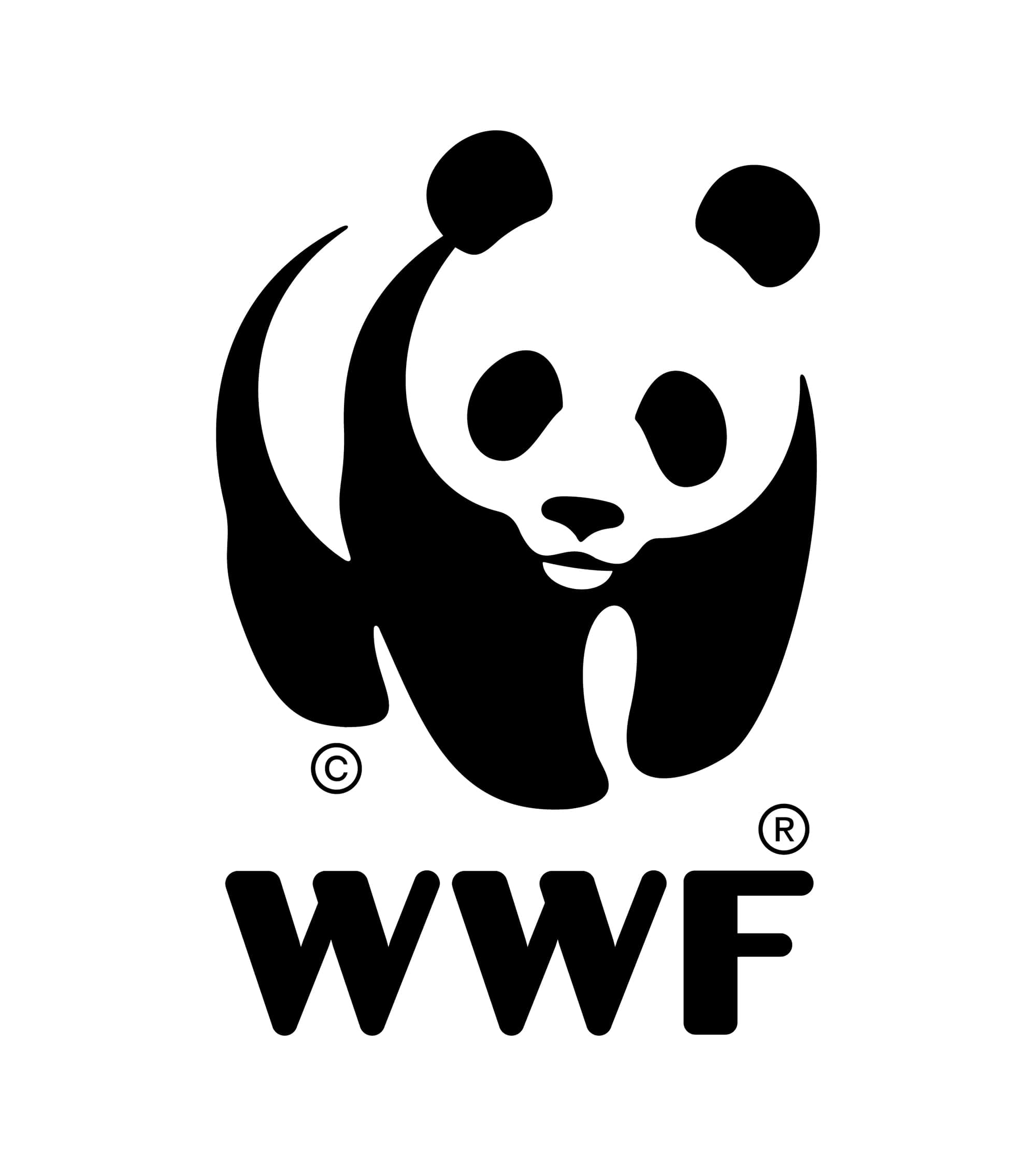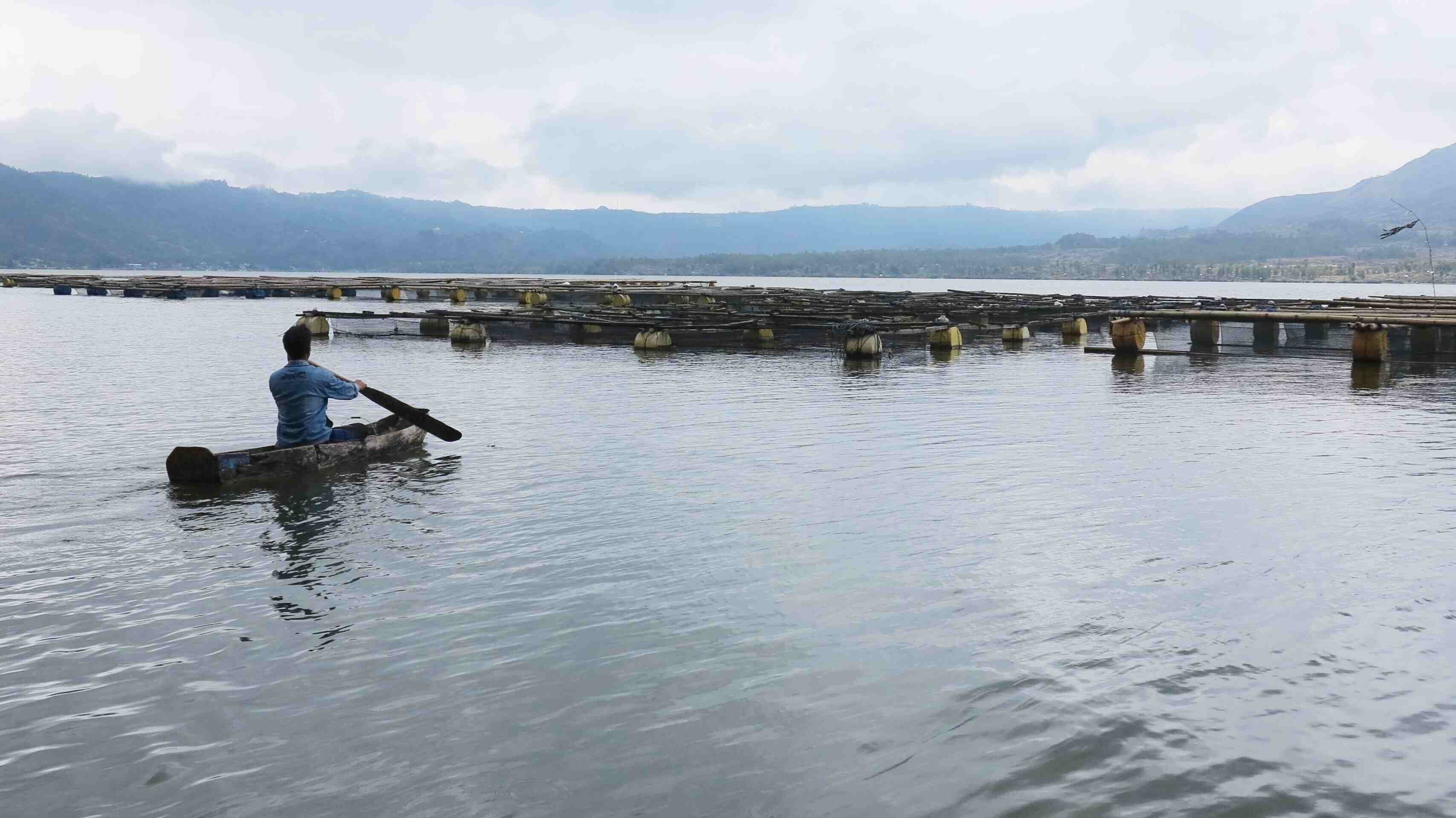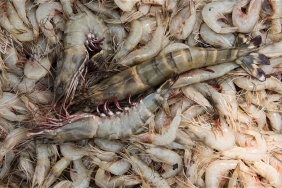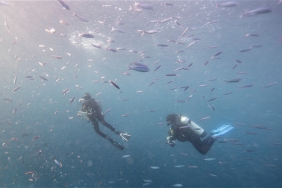WWF-INDONESIA EMBRACES KOTO PANJANG RESERVOIR FARMERS TO PRESERVE ECOSYSTEMS
The utilization of aquatic resources to improve the community's economy has become a common practice in Indonesia. Reservoirs or lakes are one of the locations that have the potential to be developed in the fields of fisheries, tourism and energy. For example? Cirata Reservoir in West Java and PB Soedirman Reservoir in Central Java are the centers of cage fisheries, tourism and also hydropower plants.
Ironically, it is not uncommon for these activities to cause environmental pollution problems and social conflicts. An example of a case of environmental damage that occurred was the mass death of fish that occurred in Dandu Toba in 2018. The results of the investigation conducted by the Task Force from the Ministry of Marine Affairs and Fisheries stated that there were three alleged causes of mass fish deaths, namely (1) Decreased supply of dissolved oxygen for fish; (2) The density level is too high; (3) The condition of the placement of floating nets in a location that is too shallow with the condition of the bottom of the water is mud.
Ironically, these activities cause environmental pollution and social conflict.
Not only in Java, a reservoir that functions as a center of activity for the community has also developed in Riau Province, named Koto Panjang Reservoir in Kampar Regency. Currently, the reservoir is utilized as an area for aquaculture, tourism and hydropower. Reflecting on the utilization of reservoirs that lead to environmental damage and social conflicts, the Kampar Regency Fisheries Service in collaboration with WWF-Indonesia initiated the implementation of Aquaculture with an Ecosystem Approach (ADPE) or Ecosystem Approach to Aquaculture (EAA).
Pre-Assessment of ADPE Kotopanjang Reservoir
December 2018, the Fisheries Service of Kampar Regency together with WWF-Indonesia conducted the ADPE pre-assessment process for Kotopanjang Reservoir. The ADPE assessment pedum is a guide for conducting an assessment process for aquaculture area management. The concept itself is a strategy to integrate aquaculture activities with broader environmental aspects by balancing the relationship between socio-economic and environmental aspects and governance to achieve sustainable development. The assessment results show that the ADPE value of the Koto Panjang Reservoir area is 1.9 out of a maximum value of 3 or around 62.1% of the ideal conditions or in other words the level of ADPE implementation is still within the minimum limit in the moderate category.
Following up on the results of the pre-assessment, the Kampar Regency Fisheries Service, supported by WWF-Indonesia as well as the Director General of Aquaculture (DJPB) of the Ministry of Marine Affairs and Fisheries, conducted a process of socializing the results of the ADPE pre-assessment, followed by an environmental awareness workshop within the framework of managing the Koto Panjang Reservoir area.
The socialization activities were attended by all SKPDs of Kampar Regency, including the Kampar Fisheries Agency, the Kampar Environment Agency, the Kampar BAPEDA, the Kampar Industry and Manpower Agency, the Kampar Investment Agency, the Kampar Tourism and Culture Agency, the Merangin Village Head and the Kampar Fisheries Extension Officer.
In this activity several recommendations were obtained, including (1) The local government together with KJA cultivators are expected to continue to monitor and maintain the number of KJA and their production so as not to exceed the environmental carrying capacity of the Koto Panjang Reservoir; (2) The local government issues legality for KJA activities in the Koto Panjang Reservoir; (3) The local government has a joint manager of Koto Panjang reservoir utilization activities to overcome social conflicts between users/utilizers of the reservoir; and (4) Efforts to increase ADPE assessment in Koto Panjang Reservoir must be accompanied by the formation of the ADPE Area Management Team led by the Kampar Regent with its membership consisting of the Steering Committee and the Implementation Team.
Efforts to Improve the Status of ADPE Assessment
"ADPE has several roles and functions including increasing food security programs, strengthening the existence of aquaculture areas and opening up employment / business opportunities, increasing the competitiveness of environmentally friendly aquaculture products and stimulating investment, driving aquaculture-based local / national economies and maintaining and improving environmental quality in order to integrate sustainable development programs in an area" said H. Zulfahmi, S. Pi., M. Si (Secretary of the Department of Fisheries and Maritime Affairs Kab. Kampar) in the discussion session.
The workshop activity became an event to provide a stimulus for KJA farmers in Kotopanjang Reservoir to always pay attention to the environment around the cultivation site. This activity is closely related to efforts to improve the status of ADPE assessment, especially in supporting one of the assessment components, namely "Ecosystem Sustainability."
Mr. H. Joni as the Koto Panjang Reservoir KJA cultivator from the Maju Farmer Group said "Cultivators hope that the occurrence of environmental pollution should not only blame KJA cultivators, because other activities such as tourism, agriculture and plantations around the reservoir also have a contribution to pollution in the Koto Panjang Reservoir. KJA cultivators are also committed to protecting the environment, one of which is the existence of a boat that is used to pick up garbage in the reservoir, "he explained in the discussion session. The types of waste that are often found are leftover fish feed bags, plastic waste, dead fish and also wood floating on the surface of the reservoir.
At the end of the activity Mr. H. Zulfami S.Pi, M.Si revealed "The sustainability of the ecosystem in Kotopanjang Reservoir is a shared responsibility and must be carried out in synergy by various parties. Therefore, let us jointly maintain the Koto Panjang Reservoir so that it is sustainable and does not get zero KJA status by the central government," he concluded.
Footnote:
- The Koto Panjang Reservoir Ecosystem is located in two areas of authority, namely XIII Koto Kampar District (Riau Province) and 50 Kota District (West Sumatra Province). Koto Panjang Reservoir Ecosystem has the main function as a hydroelectric power plant. Koto Panjang Hydropower Reservoir was built in 1992 and completed in 1997, has a dam height of 96 meters and an inundation area of 400 ha with water depth ranging from 73-85 meters. In addition, the Koto Panjang Reservoir ecosystem is also utilized for aquaculture activities in floating net cages (KJA), capture fisheries and tourism. The fish commodities in Koto Panjang Reservoir are carp and tilapia.





